IRF
IRF Uppsala
RPF programme
IRF-U Staff
Seminars
Courses
PhD studies
Examensarbete
Workshops
Cluster
...EFW
...Quicklook
Cassini
Rosetta
Solar Orbiter
Intranet
| INSTITUTET FÖR RYMDFYSIK | UPPSALA |
 |
|
| Swedish Institute of Space Physics | (59°50.272′N, 17°38.786′E) |
Project work (30 c)/Examensarbete (30 hp)
Investigation of antenna noise sources for the JUICE mission
Student: Elias Odelstad, Uppsala UniversitySupervisor: Andris Vaivads
Period: Spring 2013
Goal
To characterize the noise levels for different expected plasma conditions of the Langmuir probe antennas on the future ESA mission JUICE.Abstract
The noise in the Langmuir Probe and Plasma Wave Instrument (LP-PWI) on board ESA:s future Jupiter satellite JUICE (Jupiter ICy Moons Explorer) was investigated. Thermal Johnson-Nyquist noise and shot noise, caused by fluctuations in the probe-plasma currents, were combined with the quasi-thermal noise (QTN) due to thermal fluctuations in the electric field in the plasma, using a small signal equivalent circuit model. The contributions and effects of each of the considered noise sources were examined and compared for a number of representative space plasma conditions, including the cold dense plasma of Ganymede's ionosphere and the hot tenuous plasma out in the Jovian magnetosphere.
The results showed that in the cold dense plasma of Ganymede's ionosphere, the antenna was long compared to the Debye length and the quasi-thermal noise had a clearly pronounced peak and a steep high-frequency cut-off. For an antenna biased to 1 V with respect to the plasma, the shot noise due to the ambient plasma was the dominant source of noise. For a an antenna at the floating potential the photoelectron shot noise coalesced with the shot and Nyquist noises of the ambient plasma to form almost a single curve. In the hot tenuous plasma out in Jupiter's magnetosphere, the antenna was short compared to the Debye length and the QTN spectrum was much flatter, with little or no peak at the plasma frequency and a very weak high-frequency cut-off. For an antenna biased to 1 V, the shot noise due to photoelectron emission dominated at Callisto's orbital position whereas at Ganymede's and Europa's orbital positions the Nyquist and shot noises of the ambient plasma particles were the dominant noise components . For an antenna at the floating potential, the shot and Nyquist noises of the ambient plasma also dominated the output noise, except at Europa's orbital position, where the quasi-thermal noise was the largest noise component for frequencies at and above the plasma frequency.
Results
![[JUICE at Ganymede]](../../img/JUICE_spacecraft_concept.jpg)
ESA's JUICE spacecraft at Ganymede.
[Image credit: ESA/NASA]